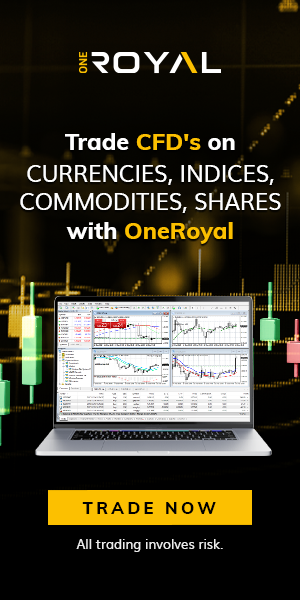One indicator needed in understanding market movements and making wise trading decisions is R-Squared Indicators. While it may not be as widely recognized as some other technical tools, its ability to measure.
The R-Squared Indicators is a statistical measure that helps traders assess the degree of correlation between a currency pair’s price movements and a specific trend or indicator. Originating from statistical analysis, the R-Squared value ranges from 0 to 1, where:
- 0 indicates no correlation.
- 1 signifies a perfect correlation.
A high R-Squared value suggests that the price is closely following the trend, while a low value indicates a weaker relationship.
In This Post
How the R-Squared Indicator is Calculated
The R-Squared Indicatorsis a tool that helps traders understand how well a trendline or moving average fits the price data of a currency pair. Here’s an easy explanation of how it’s calculated:
Linear Regression: First, a linear regression is performed. This means plotting the currency’s price data on a chart and drawing a trendline or using a moving average to see how closely the prices follow the trend.
Sum of Squares: Two sums are calculated:
SS_Total: This measures the total variation in the price.
SS_Residual: This measures the difference between the actual price and the trendline or moving average.
R-Squared Formula: The formula for R-Squared is: [ R^2 = 1 –SS Residual / SS Total ] This gives a number between 0 and 1, showing how much of the price movement can be explained by the trendline or moving average.
Interpreting the R-Squared Indicator in Forex High R-Squared Value (0.8 – 1.0)
A value close to 1 means the price follows the trendline very closely. This suggests the trend is strong and reliable.
Moderate R-Squared Value (0.5 – 0.8): A moderate value means the price follows the trendline somewhat, but there may be some deviations or fluctuations.
Low R-Squared Value (0.0 – 0.5): A low value means the price is not following the trendline closely. This can signal uncertainty or volatility in the market.
How to Use the R-Squared Indicator in Forex Trading
1. Confirm Trends
If the R-Squared value is high, it confirms that the currency is following the trend. This can strengthen your confidence to trade in the direction of the trend.
2. Identify Market Conditions
A low R-Squared value suggests the market may be moving sideways or without a clear trend. In such cases, trend-following strategies may not work as well. Consider switching to range-bound strategies.
3. Improve Entries and Exits
Combine the R-Squared Indicator with other tools like moving averages to decide when to enter or exit a trade.
For example, if the R-squared value is high and a moving average crossover signals a buy, this may be a good time to enter a trade.
4. Manage Risk
In volatile markets with low R-squared values, consider tightening your stop-losses or reducing the size of your trades to minimize risk. This helps you adjust to the uncertainty in the market.
Assessing a Trend with the R-Squared Indicator
You are trading the EUR/USD currency pair and notice an apparent uptrend based on a moving average. To confirm the trend’s strength, you calculate the R-Squared value using the recent price data and the moving average as a reference line.
1. High R-Squared Value
- Suppose the calculated R-Squared value is 0.85.
- This indicates a strong correlation between the price movement and the moving average, suggesting that the trend is reliable and consistent.
Action: - You can confidently place a long trade, as the high R-Squared value supports the likelihood of the uptrend continuing.
- Combine this insight with additional tools, like momentum indicators, to determine entry points and risk management levels.
2. Low R-Squared Value
- Imagine the calculated R-Squared value is 0.35.
- This suggests a weak correlation between the price action and the moving average, indicating that the trend is not well-defined or reliable.
Action: - Be cautious about entering a trade.
- Use additional analysis tools, such as RSI or MACD, to identify better opportunities or confirm the market’s direction. Alternatively, wait for clearer market signals before committing to a position.
Advantages of the R-Squared Indicator
1. Quantitative Insight
The R-Squared Indicator provides a numerical value that measures the strength of a trend. This data-driven approach enhances the analytical depth of your trading strategy, allowing for more objective decision-making.
2. Trend Validation
By quantifying the correlation between price action and a reference line (e.g., a moving average), the indicator validates the strength and reliability of trends. This helps traders avoid false signals and focus on higher-probability setups.
3. Flexibility
The R-Squared Indicator is adaptable to various timeframes and currency pairs, making it a versatile tool. It can be used by day traders analyzing intraday trends or swing traders focusing on longer-term market movements.
Limitations of the R-Squared Indicator
1. Lagging Nature
As with many technical indicators, the R-Squared value is calculated based on historical data, making it inherently lagging. This may result in delayed identification of trend shifts, particularly in fast-moving markets.
2. Not a Standalone Tool
While the R-Squared Indicator is useful for assessing trend strength, it does not provide direct buy or sell signals.
To maximize its effectiveness, it should be combined with other indicators, such as volume analysis, oscillators, or candlestick patterns, and a broader understanding of market conditions.
3. Complexity
For beginners, the statistical foundation of the R-Squared Indicator can be challenging to grasp. Understanding its calculation and proper interpretation requires familiarity with concepts like regression analysis and correlation.
Frequently Asked Questions
1. What does the R-Squared Indicators tell you in forex trading?
The R-Squared Indicators measures how well a trendline or moving average fits the price data, helping traders assess the strength and reliability of a trend.
2. How do you interpret R-Squared values in trading?
High R-Squared values (closer to 1) indicate a strong trend correlation, while low values suggest weak alignment between the price and trend.
3. Is the R-Squared Indicators lagging or leading?
The R-Squared Indicator is a lagging tool, meaning it follows the market’s past data and may not detect early trend reversals.
Conclusion
The R-Squared Indicator is a valuable tool for forex traders seeking to measure the strength of trends and the correlation between price movements and trendlines.
By incorporating the R-Squared Indicator into your trading strategy, you can gain insights into market trends, validate trading signals, and enhance your decision-making process.
However, it’s important to use it in conjunction with other technical tools and market analysis to ensure a well-rounded trading approach.




